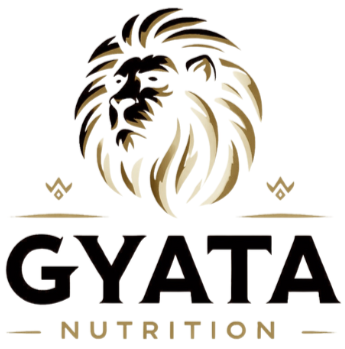
A Comprehensive Guide to Prehab and Rehab for a Stronger Recovery
The Importance and Impact of Prehabilitation: Setting Yourself Up for Success
Surgery is a major event that challenges your body and mind. What many people don’t realize is that the recovery process doesn’t begin after surgery—it starts before the procedure with proper preparation. This process, called prehabilitation (prehab), focuses on optimizing your nutrition, physical fitness, and mental readiness so you’re in the best possible condition for surgery and recovery.
When combined with effective post-operative rehabilitation (rehab), prehab can significantly reduce complications, speed up recovery, and get you back to living your life sooner.
Why Prehab Matters: The Evidence Is Clear
Surgery puts tremendous stress on your body. Prehab helps your body handle that stress more effectively by building strength, improving lung function, and optimizing your nutritional status. Research shows that prehab can:
- Lower the risk of post-op complications, including infections, delayed wound healing, and blood clots.
- Shorten hospital stays, helping you get home faster.
- Speed up recovery, so you regain strength and mobility more quickly.
- Reduce ICU admissions, especially for high-risk surgeries.
The better prepared you are before surgery, the smoother your recovery will be afterward.
What We See in the ICU Post-Surgery
As an ICU doctor, I’ve seen firsthand how difficult recovery can be for patients who aren’t properly prepared before surgery. Many post-op patients in the ICU face complications like infections, pneumonia, or severe muscle loss (sarcopenia), which can delay their recovery and sometimes lead to long-term disability.
The truth is, many of these challenges are preventable. With the right nutrition, physical preparation, and mental readiness before surgery, you can stack the odds in your favor and set yourself up for a smoother recovery.
Comprehensive Prehab & Rehab Regimen
Here’s your step-by-step toolkit to prepare for surgery and support your recovery afterward. It’s built around four key pillars: Protein & Nutrition, Prehab Exercises, Mindfulness & Mental Resilience, and Breathing Techniques. We’ve also included collagen supplementation as a powerful option for enhancing recovery, particularly for connective tissues, skin, and joint health.
1. Protein & Collagen: Fuel Your Recovery
Protein is the cornerstone of healing—it repairs tissues, builds muscle, and supports your immune system. Adding collagen to your regimen offers complementary benefits, particularly for skin, tendons, cartilage, and wound healing.
Whey Protein:
- Why it’s important: Whey protein is rich in essential amino acids, including leucine, which stimulates muscle repair and prevents muscle loss.
- Pre-Surgery:
- 20–30g daily, starting 2–4 weeks before surgery, helps build protein reserves and reduces the risk of muscle wasting.
- Post-Surgery:
- Continue 20–30g daily for at least 4–6 weeks to support tissue repair and recovery.
💡 Use code KWADCAST15 at checkout for 15% off Gyata whey protein, a high-quality option to fuel your recovery.
Collagen:
- Why it’s important: Collagen complements whey protein by targeting connective tissue repair, joint health, and skin regeneration—all crucial for healing surgical incisions and supporting recovery.
- How collagen helps:
- Promotes wound healing and reduces scar formation.
- Strengthens tendons, ligaments, and cartilage, which is particularly important for orthopedic surgeries (e.g., joint replacements).
- Supports gut health, which is critical for gastrointestinal surgeries and overall recovery.
- When to use it:
- Pre-Surgery: Start 2–4 weeks before surgery, taking 10–15g of collagen peptides daily.
- Post-Surgery: Continue for at least 4–6 weeks to promote healing and connective tissue repair.
Gyata Nutrition Collagen is unlike farmed fish or cattle-derived collagen, ours is GMO-free, and free of added hormones, antibiotics, colors, flavors, or fillers. As a clean source of type 1 collagen, it aligns with the body's most abundant collagen for optimal purity and efficacy.
2. Prehab Exercises: Build Strength & Mobility
Prehab exercises are essential for maintaining muscle mass, improving flexibility, and building cardiovascular endurance. These simple, evidence-based exercises can prepare your body for surgery and speed up post-op recovery.
A. Strengthening Exercises
- Sit-to-Stand (Lower Body & Functional Strength):
- Sit on a sturdy chair with feet flat on the floor.
- Stand up without using your hands, then sit back down slowly.
- Perform 10–15 reps, 2–3 sets daily.
- Wall Push-Ups (Upper Body & Core):
- Stand a few feet from a wall, hands shoulder-width apart on the wall.
- Slowly lower yourself toward the wall, then push back to starting position.
- Perform 10–12 reps, 2–3 sets daily.
- Glute Bridges (Core & Glutes):
- Lie on your back, knees bent, feet flat on the floor.
- Lift your hips until your body forms a straight line from shoulders to knees.
- Hold for 2–3 seconds, then lower.
- Perform 10–12 reps, 2–3 sets.
B. Cardiovascular Prehab
- Marching in Place (Light Cardio):
- Stand tall, swing your arms, and march in place.
- Start with 2–3 minutes, working up to 5–10 minutes daily.
- Walking:
- Aim for 10–20 minutes daily of brisk walking, gradually increasing intensity as tolerated.
C. Flexibility & Mobility
- Seated Hamstring Stretch:
- Sit on the edge of a chair, extend one leg forward with your heel on the floor.
- Lean forward gently from your hips until you feel a stretch in the back of your thigh.
- Hold for 20–30 seconds, then switch sides.
- Cat-Cow Stretch (Spinal Mobility):
- Get on all fours, arch your back upward (like a cat), then drop your belly down (like a cow).
- Perform 10–12 reps daily.
3. Mindfulness & Mental Resilience: Prepare Your Mind
Surgery can be stressful, but building mental resilience can reduce anxiety and improve recovery outcomes.
A. Guided Visualization
- Spend 5 minutes daily imagining a smooth surgery and successful recovery. Picture yourself walking, eating, and resuming normal activities.
B. Journaling
- Write down your thoughts, concerns, and goals for recovery. Reflecting on your progress can ease anxiety and keep you motivated.
C. Meditation
- Practice simple meditation: Sit quietly, close your eyes, and focus on your breathing for 5–10 minutes daily.
4. Breathing Techniques: Improve Lung Function
Good lung function reduces the risk of post-op complications like pneumonia or infections. Start practicing these techniques before surgery:
- Diaphragmatic Breathing:
- Sit comfortably, place one hand on your chest and one on your belly.
- Inhale deeply through your nose, expanding your belly (not your chest).
- Exhale slowly through pursed lips.
- Practice for 5–10 minutes, 2–3 times daily.
- Incentive Spirometry (if provided):
- Follow your doctor’s instructions to improve lung capacity and prevent complications.
Take Action Today!
Preparing for surgery is one of the most important steps you can take for a faster, smoother recovery. By incorporating protein and collagen supplementation, prehab exercises, mindfulness techniques, and breathing exercises, you’re setting yourself up for success.
